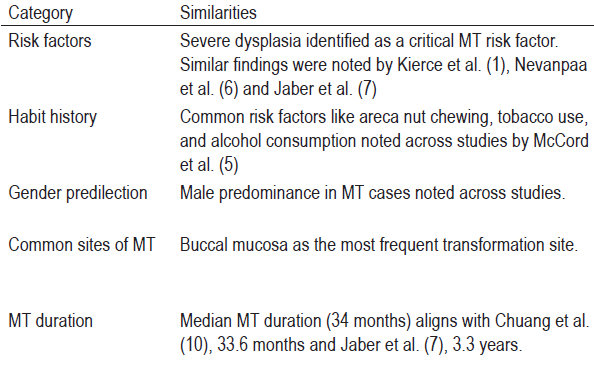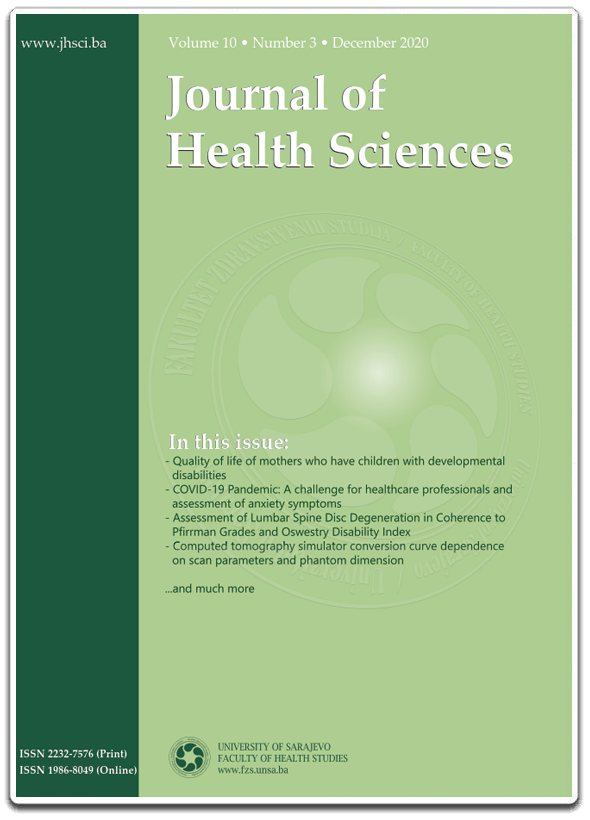Malignant transformation in oral epithelial dysplasticlesions: An observational study
DOI:
https://doi.org/10.17532/jhsci.2025.2714Keywords:
Carcinoma, squamous cell, mouth neoplasms, hyperplasiaAbstract
Introduction: This research study is a comprehensive analysis of cases oral epithelial dysplasia (OED) to oral squamous cell carcinoma (OSCC) over the past decade, with a particular focus on eliciting the frequency of malignant transformation (MT) of OED within this group of 328 patients in a tertiary center of Karnataka. Aim of this study is to investigate the likely correlation between OSCC and OED with demographic details, clinical parameters, and risk factors, highlighting the frequency of MT of OED to OSCC.
Methods: This study, retrospectively analyses 328 cases of OSCC (n = 236) and OED (92) using the medical records of the patients over 10 years, out of which 29 cases of OED had undergone MT. Statistical analysis was conducted using the Chi-square and Wilcoxon rank sum tests.
Results: The median IQR of MT (n = 29) was found to be 34 months (within a range from 27 to 38 months). 51.7% of dysplastic cases had transformed into well-differentiated squamous cell carcinoma and 48.3% of dysplastic cases had transformed into moderately differentiated squamous cell carcinoma the risk of cancer increased with severe dysplasia, the median age was found to be 54, which was prevalent in the buccal mucosa and male patients with a habit history.
Conclusion: Severe dysplasia could serve as a significant indicator for evaluating MT risk in patients with potentially malignant lesions; Moreover, our data indicated that patients with OED require long-term monitoring and clinical follow-up, thereby aiding in early intervention.
Downloads

Downloads
Published
Issue
Section
Categories
License
Copyright (c) 2025 Anuhya Jayanthi, Sagar Krishna, Sunitha Carnelio, Vasudev Guddattu, Spoorti Kulkarni

This work is licensed under a Creative Commons Attribution 4.0 International License.










